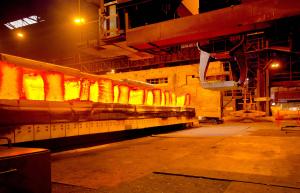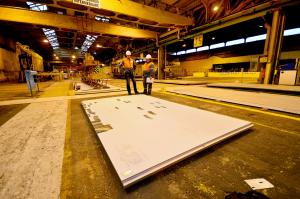In the forges of ITER
How would you like your steel? Laced with a bit of titanium, niobium or molybdenum for better resistance to corrosion? With as little ferrite as possible in order to be permeable to magnetic fields? Or with added boron for better neutron absorption?
At the Industeel-Le Creusot plant in central France, a business unit of the global giant Arcelor-Mittal, steel plates comes in all thicknesses and grades. The steelworks, which was founded in 1836, has evolved into a world-class leader for special, high performance and "niche" steels—precisely the kind that ITER needs.
Steel is basically an alloy of iron and carbon. But production has come a long way since the first industrial foundries were established in the 19th century. At Industeel-Le Creusot some 450 different grades are available, reflecting international and domestic standards, and the chemical composition of each one can be tweaked to meet the specific needs of the customer.
"Our job is to adapt our formulas accordingly," explains Nathalie Mottu-Bellier, an engineer at Industeel-Le Creusot. "It's all a matter of chemistry..."
Industeel-Le Creusot has already shipped 5,000 tonnes of stainless steel plates to India (half of it destined for the ITER cryostat), 3,500 tonnes each to Japan and Korea, and 300 tonnes to Russia. The "steel jewellers" as they dub themselves, are also recyclers: as steel has the particularity of being indefinitely recyclable, all the plates produced at Le Creusot comes from steel scrap, trimmings and cut-offs from, among others, the automotive and construction industries.



